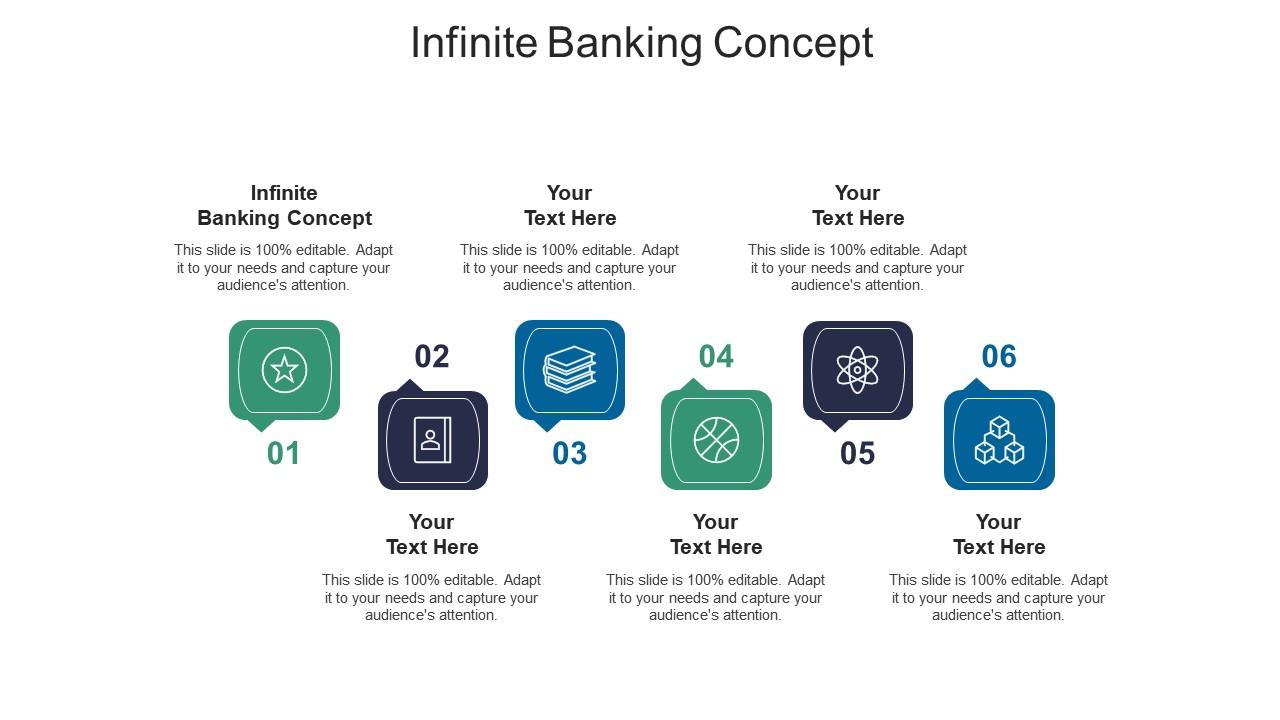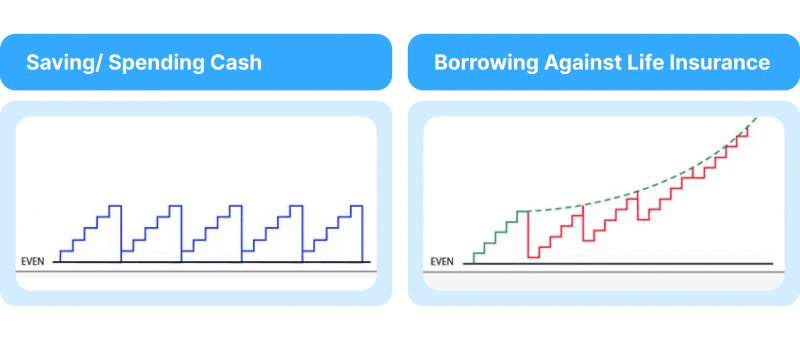All Categories
Featured
Table of Contents
Okay, to be reasonable you're truly "banking with an insurer" instead of "financial on yourself", however that concept is not as simple to sell. Why the term "limitless" financial? The idea is to have your money working in several areas at the same time, instead of in a single place. It's a little bit like the idea of acquiring a house with cash money, after that borrowing against your house and placing the cash to function in another investment.
Some people like to chat regarding the "velocity of cash", which generally means the exact same thing. In reality, you are simply making the most of leverage, which functions, but, certainly, functions both methods. Truthfully, every one of these terms are frauds, as you will certainly see listed below. That does not imply there is nothing worthwhile to this principle once you get past the advertising.
The entire life insurance policy market is pestered by overly expensive insurance, massive compensations, unethical sales techniques, reduced prices of return, and badly enlightened customers and salespeople. If you want to "Financial institution on Yourself", you're going to have to wade into this sector and really buy whole life insurance coverage. There is no substitute.
The warranties intrinsic in this item are essential to its feature. You can borrow against the majority of kinds of money worth life insurance policy, yet you shouldn't "bank" with them. As you buy an entire life insurance coverage plan to "bank" with, bear in mind that this is a completely different section of your financial strategy from the life insurance policy section.
Purchase a huge fat term life insurance policy policy to do that. As you will see below, your "Infinite Financial" policy really is not mosting likely to accurately offer this essential monetary function. An additional trouble with the fact that IB/BOY/LEAP depends, at its core, on a whole life policy is that it can make acquiring a policy troublesome for several of those curious about doing so.
Ray Poteet Infinite Banking
Dangerous hobbies such as SCUBA diving, rock climbing, skydiving, or flying also do not mix well with life insurance products. That may work out fine, considering that the factor of the policy is not the death benefit, however remember that purchasing a plan on minor kids is much more costly than it needs to be because they are typically underwritten at a "common" rate instead than a chosen one.

Many plans are structured to do one of two things. The commission on an entire life insurance policy is 50-110% of the very first year's premium. Sometimes plans are structured to maximize the fatality advantage for the costs paid.
The rate of return on the plan is extremely essential. One of the finest ways to make the most of that element is to obtain as much money as possible into the policy.
The very best method to improve the price of return of a policy is to have a reasonably tiny "base plan", and after that placed more cash right into it with "paid-up enhancements". Rather than asking "Exactly how little can I place in to obtain a specific death benefit?" the inquiry ends up being "How a lot can I legally put right into the plan?" With even more money in the plan, there is even more cash money value left after the costs of the survivor benefit are paid.
An added benefit of a paid-up enhancement over a routine costs is that the payment price is lower (like 3-4% rather than 50-110%) on paid-up additions than the base policy. The less you pay in commission, the greater your rate of return. The price of return on your cash worth is still going to be unfavorable for a while, like all money worth insurance policy policies.
It is not interest-free. Actually, it may cost as much as 8%. A lot of insurer just supply "straight recognition" financings. With a straight recognition car loan, if you borrow out $50K, the dividend price related to the cash worth annually just relates to the $150K left in the plan.
Your Own Bank
With a non-direct recognition car loan, the business still pays the exact same dividend, whether you have "obtained the cash out" (practically versus) the policy or not. Crazy, right? Why would they do that? That understands? They do. Commonly this feature is matched with some much less useful aspect of the plan, such as a reduced reward price than you may obtain from a plan with direct recognition finances (infinite banking spreadsheet).
The companies do not have a resource of magic free cash, so what they offer in one location in the policy have to be extracted from an additional place. However if it is extracted from an attribute you care much less around and place right into a feature you care more about, that is a good idea for you.
There is one even more important function, typically called "laundry financings". While it is excellent to still have dividends paid on money you have actually taken out of the plan, you still have to pay rate of interest on that particular loan. If the dividend price is 4% and the lending is billing 8%, you're not precisely appearing in advance.
With a laundry loan, your loan passion price coincides as the reward rate on the plan. So while you are paying 5% rate of interest on the car loan, that passion is totally countered by the 5% returns on the funding. So in that respect, it acts similar to you took out the cash from a checking account.

5%-5% = 0%-0%. Same exact same. Therefore, you are currently "banking on yourself." Without all three of these factors, this plan merely is not going to function really well for IB/BOY/LEAP. The biggest problem with IB/BOY/LEAP is the individuals pressing it. Almost all of them stand to make money from you purchasing into this principle.
Actually, there are several insurance representatives discussing IB/BOY/LEAP as a function of whole life who are not really marketing plans with the necessary functions to do it! The problem is that those that understand the principle best have a large problem of interest and typically pump up the advantages of the concept (and the underlying plan).
Infinite Banking Canada
You need to contrast borrowing versus your policy to withdrawing cash from your interest-bearing account. Return to the beginning. When you have absolutely nothing. No deposit. No money in financial investments. No money in cash value life insurance policy. You are confronted with a selection. You can put the money in the bank, you can spend it, or you can buy an IB/BOY/LEAP policy.
You pay taxes on the passion each year. You can conserve some more cash and put it back in the financial account to begin to earn passion once more.
It expands throughout the years with capital gains, returns, rents, and so on. Several of that income is taxed as you go along. When it comes time to acquire the watercraft, you sell the financial investment and pay tax obligations on your long-term funding gains. You can conserve some even more cash and acquire some even more financial investments.
The cash money worth not used to spend for insurance and commissions grows over the years at the reward price without tax drag. It begins with adverse returns, yet ideally by year 5 or two has recovered cost and is growing at the dividend rate. When you most likely to acquire the watercraft, you borrow versus the plan tax-free.
Infinite Banking Real Estate
As you pay it back, the money you paid back begins growing once again at the dividend rate. Those all work rather similarly and you can contrast the after-tax rates of return.
They run your credit and offer you a lending. You pay rate of interest on the borrowed money to the bank till the financing is settled. When it is paid off, you have a nearly useless boat and no cash. As you can see, that is not anything like the very first 3 choices.
Latest Posts
Infinite Banking Concept Pdf
Banking Life
How To Become Your Own Bank Explained‼️ - How To ...